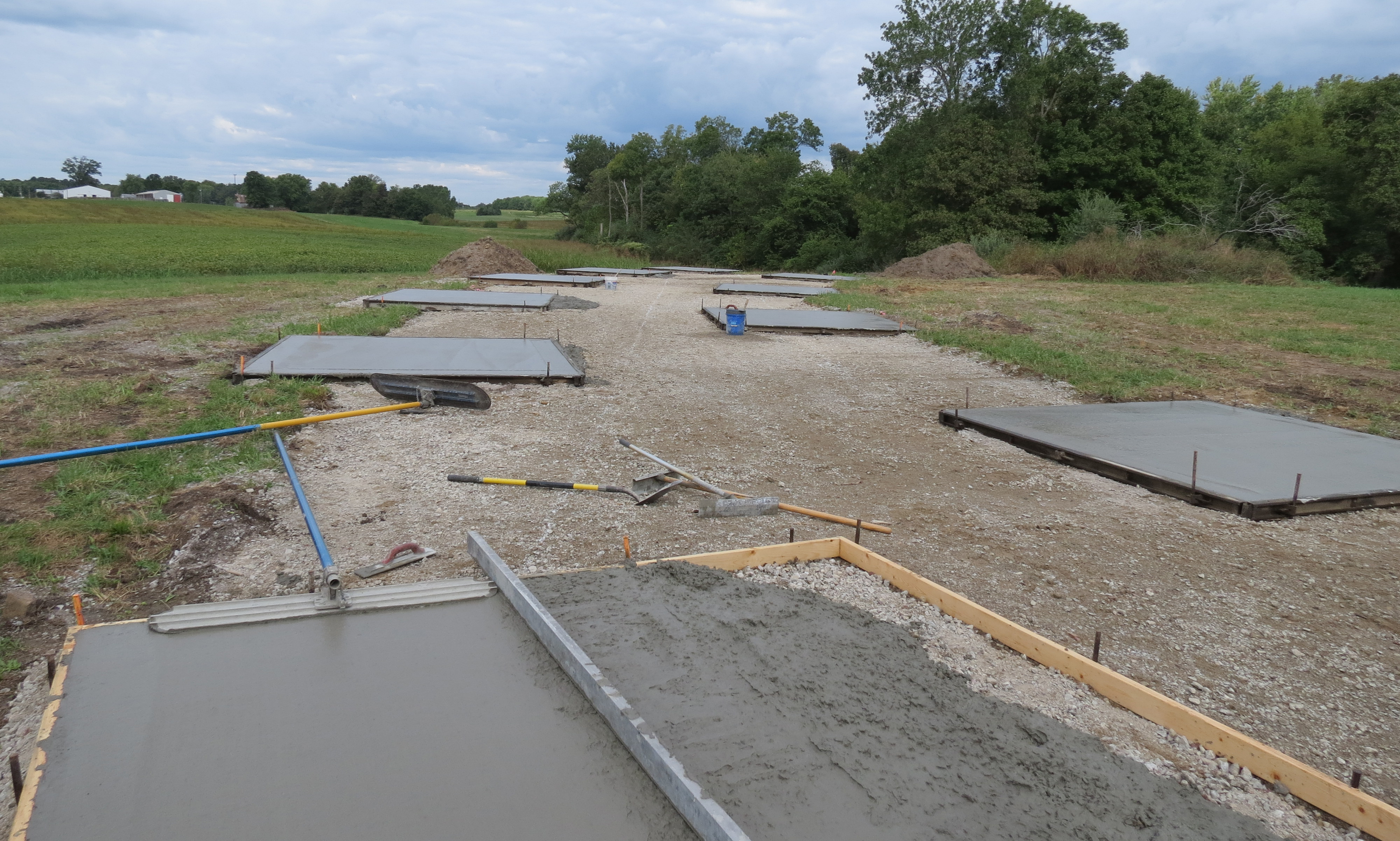
Workers at Southern Illinois University Carbondale recently completed pouring a series of concrete pads at a spot near the University Farms in the countryside west of campus that will provide scientists as well as amateur astronomers with firm, level resting spots for their telescopes -- a key requirement for quality viewing and photography. The pads will facilitate observations of the Aug. 21, 2017, total solar eclipse. (Photo provided)
October 06, 2016
Improvements will facilitate star gazing, eclipse viewing
CARBONDALE, Ill. -- Celestial observers soon will have an ideal spot from which to view the heavens at Southern Illinois University Carbondale.
The university recently completed pouring a series of concrete pads at a spot near the University Farms in the countryside west of campus. The pads will provide scientists as well as amateur astronomers with firm, level resting spots for their telescopes, which is a key requirement for quality viewing and photography.
Workers last week completed pouring 10 pads, each of them 100 square feet. Officials expect to start using them this winter during public astronomy events. The project is being funded by private donations.
The pads offer several advantages for sky watchers, said Bob Baer, specialist with Department of Physics, who coordinates public astronomy events and is co-chair of the steering committee planning for the 2017 total solar eclipse.
“The pads are level, stable, relatively vibration-free and isolated from each other,” Baer said. “They're also all-weather, so we can set up scopes on them regardless of whether the ground is wet or dry and have them remain very stable.
“All these factors contribute to being able to capture higher-quality images from telescopes at the site during observation sessions and the big day,” he said.
Southern Illinois will be the site of the longest duration of the upcoming total solar eclipse, which takes place Aug. 21, 2017. SIU is gearing up to play a major role in the event, which will feature the first total solar eclipse over the mainland United States since 1979. More information on the university’s plans is available at eclipse.siu.edu.
Not only that, but a second such event is due in 2024. The intersection of the two eclipse path centerlines is just south of Carbondale near Cedar Lake. The region offers a unique opportunity to observe these two eclipses from the same ground-based spot.
Because the 2017 event is followed closely by a similar one in 2024, SIU officials are attempting to create a permanent astronomy observation facility during the months leading up to it. The facility, as envisioned by SIU architecture students called upon to submit designs for it, included the concrete telescope pads, interconnecting sidewalks and possibly a small building with a roll-off roof to house larger, more permanent telescopes.
Plans call for the facility to be fully automated, allowing researchers and astronomy enthusiasts to operate some telescopes located at the site remotely from the Neckers Building on campus, where the images and data could be downloaded into computers for study.
Baer said that such a facility could be used to further promote and sustain the many public astronomy events the university already provides each year on the roof of the Neckers Building.
The new facility, if built, would represent a vast improvement over the Neckers Building observation area, which hums with a vibration from the building and makes it difficult to use large telescopes effectively. It also has limited capacity for participants.
The new pads mark a significant addition to the university’s ability to play host to public astronomy events as well as the upcoming eclipse.
